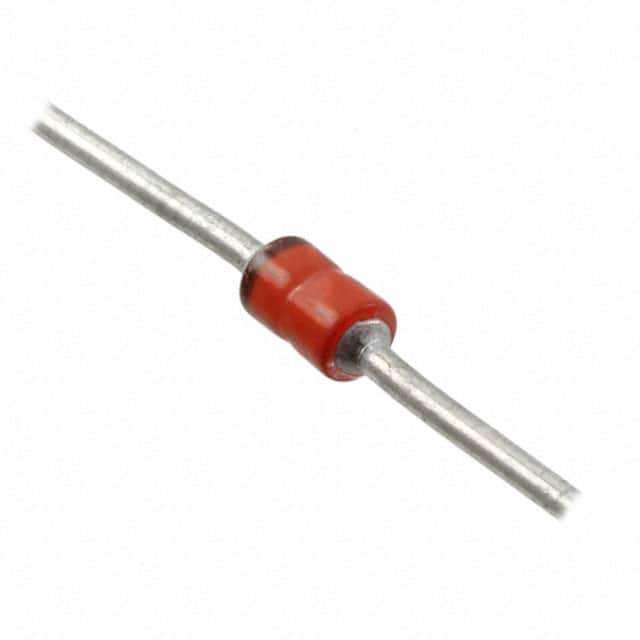MXP4KE33AE3 Product Overview
Introduction
The MXP4KE33AE3 belongs to the category of transient voltage suppressor diodes (TVS diodes) and is commonly used for surge protection in electronic circuits. This entry provides a comprehensive overview of the MXP4KE33AE3, including its basic information, specifications, detailed pin configuration, functional features, advantages and disadvantages, working principles, application field plans, and alternative models.
Basic Information Overview
- Category: Transient Voltage Suppressor Diode (TVS Diode)
- Use: Surge protection in electronic circuits
- Characteristics: Fast response time, high surge current capability, low clamping voltage
- Package: DO-214AC (SMA), SMC package
- Essence: Provides protection against voltage transients
- Packaging/Quantity: Available in tape and reel packaging, quantity varies based on supplier
Specifications
- Part Number: MXP4KE33AE3
- Voltage - Reverse Standoff (Typ): 30.0V
- Voltage - Breakdown: 33.3V
- Power (Watts): 400W
- Polarization: Unidirectional
- Operating Temperature: -55°C to 150°C
- Mounting Type: Surface Mount
- Package / Case: DO-214AC (SMA)
Detailed Pin Configuration
The MXP4KE33AE3 TVS diode has a standard surface mount package with two pins. Pin 1 is the anode, and pin 2 is the cathode.
Functional Features
- Transient Voltage Suppression: Protects sensitive electronic components from voltage transients.
- Fast Response Time: Quickly clamps transient voltages to safe levels.
- High Surge Current Capability: Can handle large surge currents without degradation.
Advantages and Disadvantages
Advantages
- Effective surge protection for electronic circuits
- Fast response time
- High surge current capability
Disadvantages
- Clamping voltage may be higher than some alternative models
- Limited to unidirectional protection
Working Principles
The MXP4KE33AE3 operates by diverting excess transient voltage away from sensitive components, thereby limiting the voltage across the protected circuit. When a transient voltage spike occurs, the TVS diode rapidly switches into its low impedance state, effectively shunting the excess energy to ground.
Detailed Application Field Plans
The MXP4KE33AE3 is widely used in various applications, including: - Power supplies - Communication equipment - Automotive electronics - Industrial control systems - Consumer electronics
Detailed and Complete Alternative Models
Some alternative TVS diode models that can be considered as alternatives to the MXP4KE33AE3 include: - P6KE33CA - 1.5KE33A - SMAJ33A
In summary, the MXP4KE33AE3 TVS diode offers effective surge protection for electronic circuits, with fast response time and high surge current capability. While it has limitations such as clamping voltage and unidirectional protection, it is widely used in diverse applications and has alternative models available for consideration.
Word count: 413
قم بإدراج 10 أسئلة وإجابات شائعة تتعلق بتطبيق MXP4KE33AE3 في الحلول التقنية
What is MXP4KE33AE3?
- MXP4KE33AE3 is a type of transient voltage suppressor diode used to protect electronic circuits from voltage spikes and transients.
What is the maximum voltage rating for MXP4KE33AE3?
- The maximum voltage rating for MXP4KE33AE3 is 33V.
What is the peak pulse power handling capability of MXP4KE33AE3?
- The peak pulse power handling capability of MXP4KE33AE3 is typically 400W.
How does MXP4KE33AE3 protect electronic circuits?
- MXP4KE33AE3 diverts excessive voltage away from sensitive components by providing a low-impedance path to ground during transient events.
In what applications can MXP4KE33AE3 be used?
- MXP4KE33AE3 is commonly used in power supplies, automotive electronics, telecommunications equipment, and industrial control systems.
What are the key features of MXP4KE33AE3?
- Some key features of MXP4KE33AE3 include its fast response time, low clamping voltage, and high surge current capability.
What is the operating temperature range for MXP4KE33AE3?
- The operating temperature range for MXP4KE33AE3 is typically -55°C to 175°C.
How should MXP4KE33AE3 be mounted on a PCB?
- MXP4KE33AE3 should be mounted close to the protected circuitry and connected with short traces to minimize inductance.
Can MXP4KE33AE3 be used for ESD protection?
- Yes, MXP4KE33AE3 can provide effective electrostatic discharge (ESD) protection for sensitive electronic components.
Are there any alternatives to MXP4KE33AE3 for transient voltage suppression?
- Yes, other alternatives include TVS diodes, varistors, and gas discharge tubes, but the selection depends on specific application requirements.


